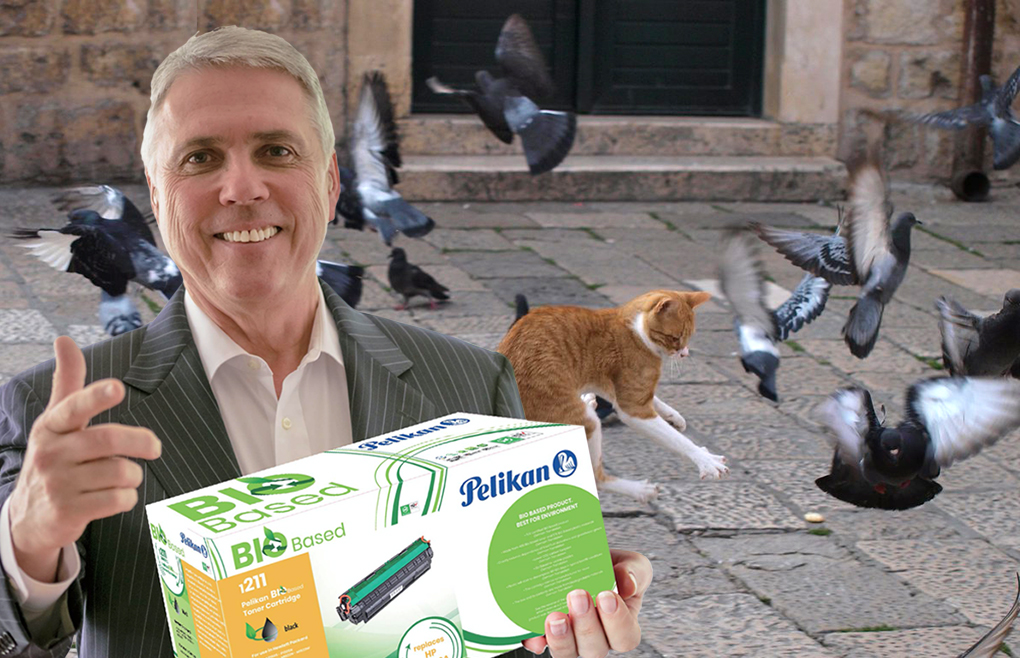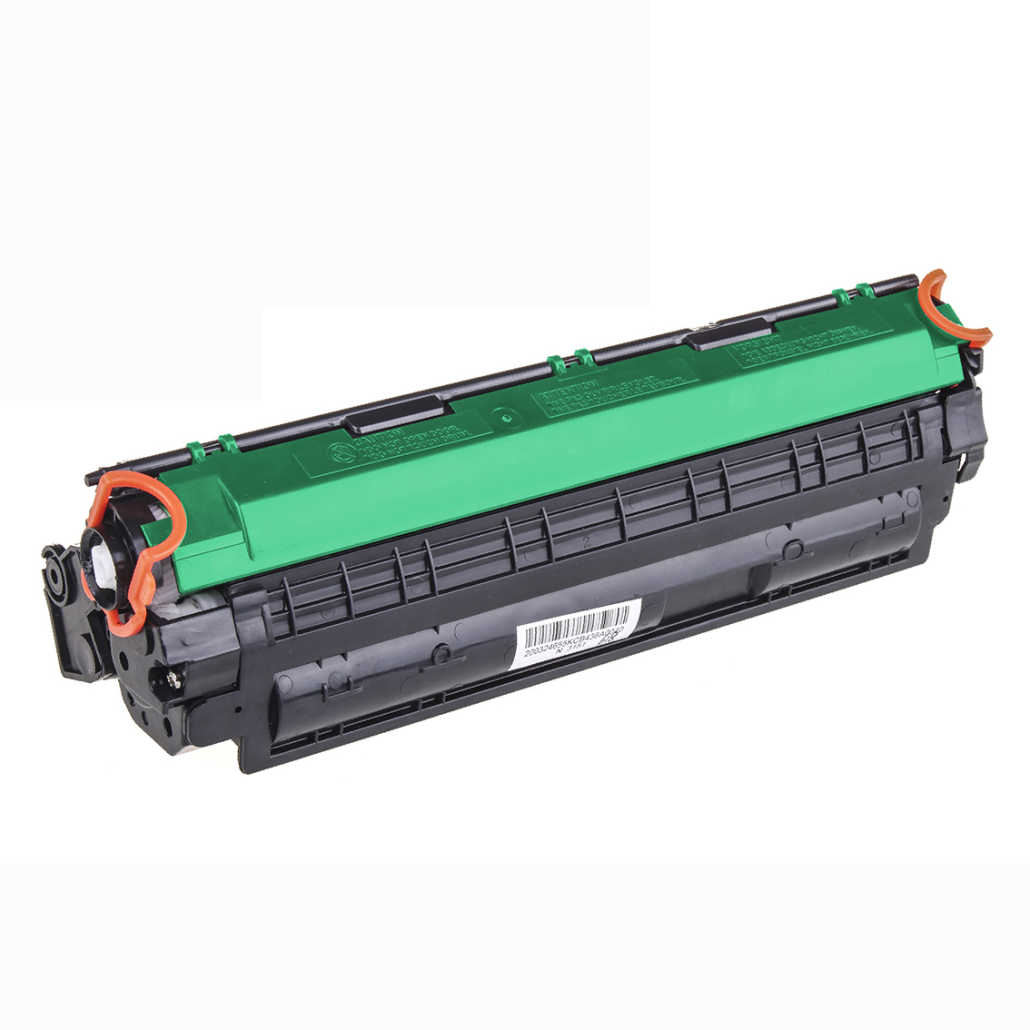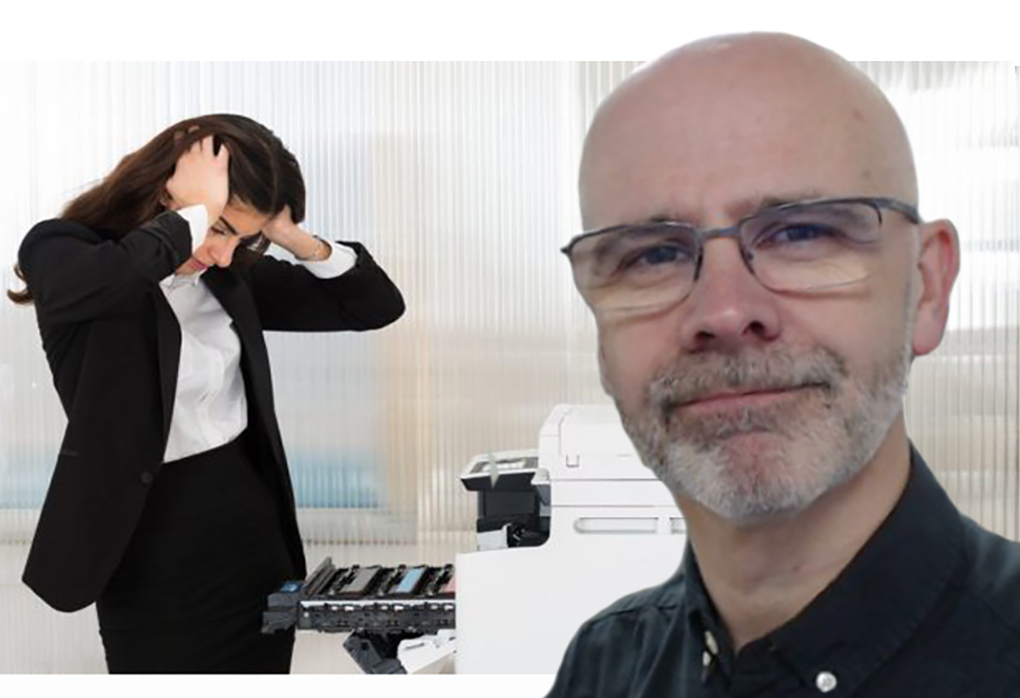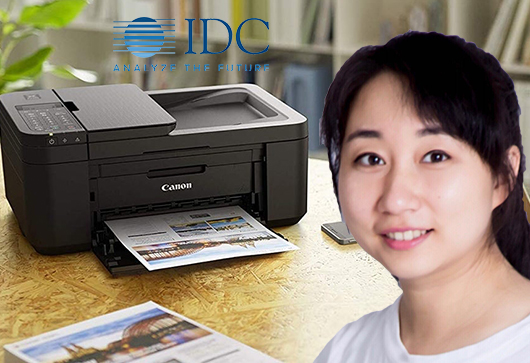Disrupting Imaging Supplies in Europe
Disrupting Imaging Supplies in Europe
Steve Weedon reveals new-built cartridges can meet tougher environmental laws and is “the cat among the pigeons” bringing disruption to the imaging supplies industry.
 Is it even possible that we could see something completely different in the imaging aftermarket after 30 years?
Is it even possible that we could see something completely different in the imaging aftermarket after 30 years?
Well, yes. Pelikan, the iconic brand that is 182 years old this year, launched a line of bio-based cartridges.
What is a bio-based cartridge? A toner cartridge made from reusable bioplastics with a bio-based toner made of 48 percent organic materials, certified by TUV bio-based standards. Lowering CO2 footprint, with all cartridge contents recoverable for reuse, but, if thrown away the cartridge plastics will start to decompose at 90-180 days at 60F and 90 percent humidity, with no loss or sacrifice, to print performance and is cheaper for the end-user than a new, original cartridge.
In 1990 when the remanufacturing industry got underway, it was easy to see the eco-friendly advantages to remanufacturing laser and ink cartridges for resale and reuse. Our vision then was to remanufacture the cartridge for reuse again and again and again. Multiple times in fact. Remanufacturers prided themselves on how many times the cartridge was remanufactured. Seven, ten times. I even heard of 24. Now that does make a difference! Long-life components were designed and made to enhance the eco-friendly program so that the drum would go multiple cycles and the mag roller also. Those were the days that remanufacturers sold directly to the end-user. That’s how the cartridge came back time and time again. The eco- friendly, remanufacture for reuse story made sense back then, in the decade of the nineties.
As the remanufacturing industry evolved so did the business model. Bigger order volumes could be had when selling to resellers who were also selling the OEM original cartridge. As the industry business model shifted to resellers, so did the focus on multiple cartridge remanufacturing. Now, remanufacturers are only interested in remanufacturing a virgin cartridge (one that has never been remanufactured before) and reject non-virgin cartridges. Remanufacturers lost the customer relationship to collect used cartridges for remanufacturing and resale.
Non-virgin empty cartridges need more time and more components to remanufacture which adds up to more cost. More cost but the same selling price means less margin. So, the focus shifted to virgin empty cartridge remanufacturing only.
So, are virgin empty cartridges, remanufactured for reuse, still eco- friendly? At best, remanufacturers can only claim that they delay the cartridge from landfill, or local waste management control, for just one more cycle. That’s NOT exactly going to save the planet, is it?
Remanufacturing was at one time the best answer we had to be environmentally friendly with the consumables the market has to offer.
Today however the eco-friendly argument of cartridge remanufacturing is old, worn out and not listened to by end-users. Many realize a remanufactured cartridge is a virgin empty with a new drum and new components added in. The sale is made on price and the customers come back for more if the performance was good. Environmentally-friendly customers will probably put the used cartridge back into a collection program. However, as a non-virgin cartridge, used remanufactured cartridges are usually destroyed or end up in a landfill.
Ten years ago, an effort spearheaded by the late Art Diamond, to make a bio toner was launched. Early iterations produced varied results but only 24 percent of biomaterial content was achieved before print performance degraded. One company, China-based Print-Rite did not give up and continued the research and development.
I am happy to announce that following ten years of research and development at Print-Rite (owner of the Pelikan consumables global license) not only have we reached a 48 percent bio ratio with the toner but we have also developed a bio-based plastic for the cartridge that has 57 percent organic material content.
So, what does the world’s first bio-based cartridge really mean to an eco- friendly end-user company looking for a reduced carbon footprint? What does it mean for those who want to help reduce greenhouse gas, CO2 levels?
- Bio-based certification is a TUV standard requiring more than 20 percent bio content to the product. Pelikan is 48% bio-based on toner and 57 percent bio-based on plastics and is TUV certified.
- HIPs (High-Intensity Polystyrene) is a 100 percent fossil fuel and is used by OEMs. It is not bio-degradable, nor is it bio-based. When incinerated it gives off toxic nitrite and sulphide gases.
- Pelikan bio-based cartridge
plastic is made of PLA and ABS thermoplastics. Organic materials like coffee grind, soy, sugars, starch, plants and wood are used. As a thermoplastic, it has the characteristic that at low temperatures, the cartridge plastic can be returned to a usable thermoplastic amorphous liquid that can be reused. When placed under high temperatures there are no toxic gases are given off. - The tensile strength of bio-plastic is 75Mpa higher than the OEM HIPs plastic which is measured at 23Mpa. This means it’s a strong plastic, robust and capable of doing its job in a low-temperature application— perfect for a laser toner cartridge.
- Print Performance. Excellent uniform prints measuring 1.54 density on solid areas.
- Very low 0.5 background.
- Same yield as OEM cartridge products.
Print-Rite Pelikan Bio-based Printer Cartridge: Here is the Sizzle
 The Pelikan branded bio-based cartridge is and must be:
The Pelikan branded bio-based cartridge is and must be:
- A Patent Safe Compatible (PSC) cartridge (which means it does not infringe the intellectual property rights of the OEM) and fully compliant with EU and US standards;
- Certified by TUV and other regional certification authorities.
Once used, the cartridge can be remanufactured using standard components just like the used OEM (virgin) cartridge. Like all Print-Rite PSCs, it is not designed as a Single Use Cartridge (SUC)—another winning feature that meets European standards.
If the cartridge should end up in landfill, the bio-plastic will start to decompose after 90 to 180 days at 60 degrees Fahrenheit and 90 percent humidity. The OEM HIPs cartridge, by comparison, will stay in a landfill without any degradation for hundreds of years.
If the cartridge finds its way into local waste collection systems, the metals can be reclaimed as usual, but the thermoplastics can also be reclaimed at low temperatures without any toxic gas emission and reused as a thermoplastic. Bio-based marks are used to identify the materials.
 The Print-Rite-manufactured, Pelikan-branded, bio-based plastic is coloured green for easy recognition and identification. So, it literally ticks all the boxes for customers who follow their company “green” policies to lower CO2 levels and who care about our environment enough to choose the best environmentally friendly product available.
The Print-Rite-manufactured, Pelikan-branded, bio-based plastic is coloured green for easy recognition and identification. So, it literally ticks all the boxes for customers who follow their company “green” policies to lower CO2 levels and who care about our environment enough to choose the best environmentally friendly product available.
These innovative bio-based cartridges are the best environmentally-friendly products available today:
- less dependency on fossil fuels means lower CO2, less greenhouse gas emissions;
- they are compliant with all EU and US standards and local regulations;
- they use patent-safe designs, supported by 3,000 technology patents developed and owned by Print-Rite.
With 39 years of cartridge remanufacturing experience, the award-winning Print-Rite is recognized as an industry innovation leader. The Pelikan branded bio-based products take the eco-friendly reman to a whole new level. Many experts in the industry are predicting this is a game-changer. It will be disrupting imaging supplies in Europe.
More information on bio-based toner cartridges is available and can be obtained by contacting Steve Weedon, the new CEO of Print-Rite Europe Limited. You can also visit the website or engage on LinkedIn.
Related News and Articles
- Disrupting Imaging Supplies in Europe
- Print-Rite Pelikan Guarantees 50% Reseller Margin
- Print-Rite Pelikan Signs Up Fighters
- Print-Rite Pelikan Expands Partnership in Germany
- Cartridge World France to Distribute Print-Rite Pelikan Brands
- Print-Rite Pelikan Paris Office Closure Explained
- Print-Rite Pelikan Set to Sizzle with New Bio-based Cartridge
- Pelikan Bio-based Printer Cartridge Set to Sizzle
- Weedon Takes Over at Print-Rite Pelikan
Comment:
Please add your comments below about this article, “Disrupting Imaging Supplies in Europe.”






Hi, Good evening. I am from Bangalore India. Looking for compatible toner cartridges and other products.